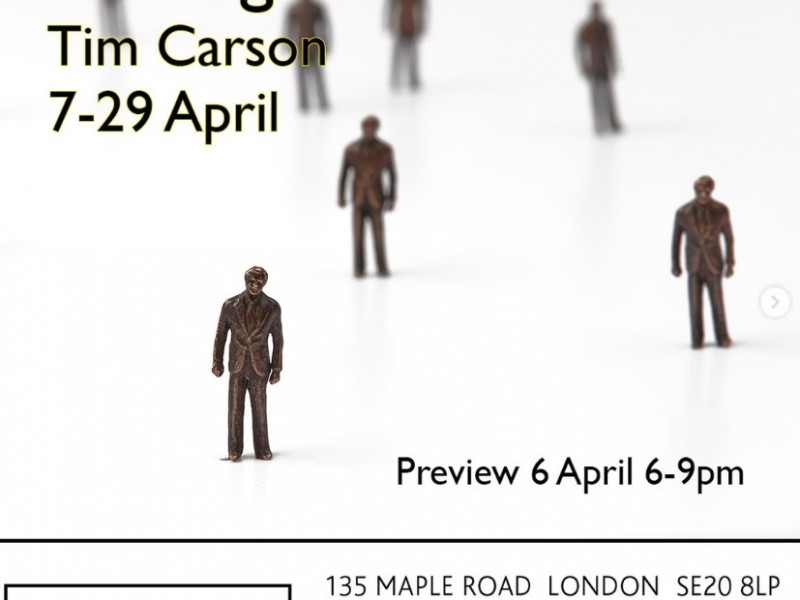Local historian Martin Spence explores the origins of the P-word
Let’s face it, Penge is widely regarded as a bit of a joke, and a lot of that is down to its name. But why exactly is the name thought to be so funny? Is it because it’s a single syllable? Is it the dialectical interplay between the initial plosive ‘P’ and the extended nasal ‘enge’? I have no idea. But those of us who choose to live here must simply learn to live it.
In fact, Penge is a very unusual place-name: the only pre-English, British place-name in Greater London. As we’d expect, most places around here have English names: Beckenham, Bromley, Croydon, Dulwich and Sydenham are all modern versions of good old English place-names which go back to Anglo-Saxon times. But Penge is older still. It derives from the British language spoken by the native population before the Anglo-Saxon settlement, the language from which modern Welsh is descended.
The name has two parts. The ‘Pen’ part means ‘head’ or ‘hill’ or ‘high’ or possibly ‘end’. The ‘ge’ part is a squashed survival of the word ‘coed’ which means ‘wood’. If Penge’s name were English, it would be something like Woodhill, or Woodhead, or Woodend, or High Wood, all of which would be sort of OK, but much less interesting, less exotic, than Penge.
How did this ancient British place-name survive so long? We know that this whole area was heavily wooded (it was part of the Great North Wood, remembered in ‘Norwood’), so maybe it was a sort of refuge, where British-speakers kept their own language alive while most of their neighbours came to speak English.
There are other place-names in South London which hint at the same thing. The ‘Camber’ in ‘Camberwell’ may be related to ‘Cymry’ which is the modern Welsh word for Welsh people. And in nearby ‘Walworth’ the ‘Wal’ element may be related to the word ‘Welsh’ itself. The implication is that, during the Anglo-Saxon settlement, English only became the dominant language very slowly, and for a while there was an ethnic and linguistic patch-work, with some British-speaking communities hanging doggedly on. And in one case – the case of Penge – the British place-name hung on for so long, and became so familiar to English-speakers as well, that it stuck.
Penge enters written history as ‘Paenge’ in a charter of 957, issued by King Eadwig:
Herto ge byreo se pude pe hatte Paenge . seofen milen . seofen furlang . and seofen fet embeganges. (“Hereto belongeth the wood that is called Penge, seven miles and seven furlongs and seven feet round about”).
The place to which Penge ‘belonged’ was the manor of Battersea, which then occupied a large swathe of South London. Battersea owned Penge for its woods, valuable both for grazing animals, and as a source of timber for building.
Incidentally, this link between Penge and Battersea continued for the next 900 years. Even today you can see a metal boundary post in Upper Norwood which reads ‘Battersea 1854’. This seems insane given that Battersea is nearly ten miles away. But in 1854 the post was quite correct: it was marking the boundary between Penge – then a “detached hamlet of Battersea” – and Croydon.
After 957, Penge’s next documentary appearance was in a charter of 1067. In that year, fresh from his victory at Hastings, William the Conqueror gave Battersea to the Abbot of Westminster – which meant that the Abbot was also entitled to “the hunting of the Wood which appertains to Battersea”, that wood being Penge.
There is another oblique reference in the Domesday Book of 1086, where Battersea’s wealth is said to include “wood for fifty hogs of pannage” – that is to say, enough acorn-producing woodland to graze fifty pigs. Again, this must be Penge, because Penge was the only extensive woodland that Battersea possessed.
An intriguing document from King John’s reign records a legal settlement between the Abbot of Westminster, and William de Ginnei and his wife Matilda from Beckenham. The settlement stated that “his wood of Pange” belonged to the Abbot; but it also granted William and Matilda, alone among Beckenham residents, extensive rights to graze their pigs, cattle and sheep in the woods. This looks like a pretty good result for a middle-ranking couple up against one of the most powerful churchmen in the land.
Even 400 years later, when Penge started to appear on printed maps, it was still identified as a wooded, rural, ‘green’ place. In John Speed’s 1610 map of Surrey it is shown as ‘Pensgreene’, and in John Rocque’s map of 1746 the cluster of houses around the Crooked Billet appears as ‘Penge Green’, with Penge Common stretching round to the north and west.
So, the next time some idiot pokes fun at Penge, you can round on them and say:
Aha! The joke is on you, my friend! For Penge is a unique survival from the ancient British tongue which is ancestral to modern Welsh!! I wonder if you can laugh at that!!!”.
And you will find that indeed they can.
You can read more about the history of Penge in Martin’s terrific book ‘The Making of a London Suburb: Capital Comes to Penge’, available in local bookshops and online. ![Penge-Map[1]](http://pengetouristboard.co.uk/wp-content/uploads/2017/07/Penge-Map1.jpg)





'Would Penge by any other name smell so sweet? The origins of the P word' has no comments
Be the first to comment this post!